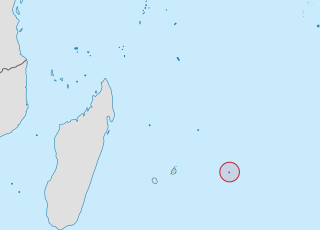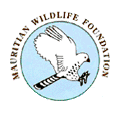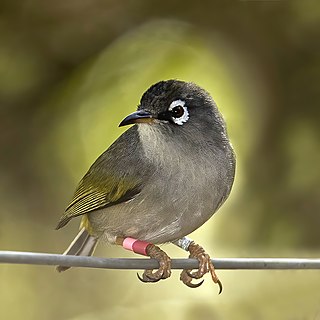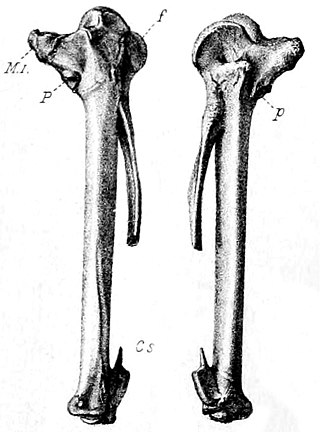
Aldabra is the world's second-largest coral atoll, lying southeast of the continent of Africa. It is part of the Aldabra Group of islands in the Indian Ocean that are part of the Outer Islands of the Seychelles, with a distance of 1,120 km (700 mi) southwest of the capital, Victoria on Mahé Island. Initially named by Arab seafarers for its harsh environment, Aldabra became a French colony dependency in the 18th century, leading to the exploitation of its natural resources, particularly giant tortoises. After passing through British hands, Aldabra faced potential military use in the 1960s, but international protests resulted in its protection. The atoll boasts unique geography, featuring the world's largest raised coral reef and a large shallow lagoon. Aldabra's history involveshuman impact, including failed agricultural ventures. Post-World War II, conservation efforts increased, leading to its inclusion in the British Indian Ocean Territory and eventual independence for Seychelles. Following an international protest by scientists known as the 'Aldabra Affair,' the Royal Society of London and later the Seychelles Islands Foundation conducted research, leading to Aldabra's declaration as a UNESCO World Heritage Site in 1982. The atoll's flora and fauna, notably the giant tortoises, comprise an 'ecological wonder', with Aldabra serving as a critical breeding ground for various species. Conservation challenges, such as invasive species and plastic pollution, persist, but protective measures, including UNESCO designation, underscore Aldabra's significance as a natural vital scientific research site. Aldabra receives limited tourism to safeguard its delicate ecosystem and is accessible primarily through guided tours.
The Rodrigues giant day gecko is an extinct species of day gecko. It lived on the island of Rodrigues and surrounding islands and typically dwelt on trees. The Rodrigues giant day gecko fed on insects and nectar, and, unlike most other day geckos, was apparently nocturnal in habit.

The Mascarene Islands or Mascarenes or Mascarenhas Archipelago is a group of islands in the Indian Ocean east of Madagascar consisting of the islands belonging to the Republic of Mauritius as well as the French department of La Réunion. Their name derives from the Portuguese navigator Pedro Mascarenhas, who first visited them in April 1512. The islands share a common geologic origin in the volcanism of the Réunion hotspot beneath the Mascarene Plateau and form a distinct ecoregion with a unique flora and fauna.

Rodrigues is a 108 km2 (42 sq mi) autonomous outer island of the Republic of Mauritius in the Indian Ocean, about 560 km (350 mi) east of Mauritius. It is part of the Mascarene Islands, which include Mauritius and Réunion. Like Agaléga, Rodrigues is a constituent island of the Republic of Mauritius, under the Constitution of Mauritius and still remains, as explicitly defined by the same Constitution, part of the Sovereignty of Mauritius, together with the following islands: "Agalega, Tromelin, Cargados Carajos, Chagos Archipelago ... Diego Garcia and other islands included in the State of Mauritius".

The Mauritian Wildlife Foundation (MWF) is an independent, non-governmental, non-profit conservation agency working in Mauritius to save threatened endemic local flora and fauna.

Round Island is an uninhabited islet 22.5 kilometres north of Mauritius. It has an area of 1.69 square kilometres and a maximum elevation of 280 metres. The island has been a nature reserve since 1957 and is administered jointly by the National Parks and Conservation Service and the Mauritian Wildlife Foundation. The island has been designated an Important Bird Area (IBA) by BirdLife International.

The Mauritius olive white-eye is a very rare and localized passerine from the family of white-eyes (Zosteropidae). It is one of two white-eye species endemic to the island of Mauritius, the other being the Mauritius grey white-eye.

The Mauritius sheldgoose, also known as the Mauritius shelduck, is an extinct species of sheldgoose that was endemic to the island of Mauritius. While geese were mentioned by visitors to Mauritius in the 17th century, few details were provided by these accounts. In 1893, a carpometacarpus wing-bone and a pelvis from the Mare aux Songes swamp were used to name a new species of comb duck, Sarcidiornis mauritianus. These bones were connected to the contemporary accounts of geese and later determined to belong to a species related to the Egyptian goose and placed in the sheldgoose genus Alopochen. The Mauritius and Réunion sheldgoose may have descended from Egyptian geese that colonised the Mascarene islands.
The Islets of Mauritius include circa 130 tiny islets and rocks scattered around the coast of Mauritius, Rodrigues, Agalega and St Brandon.
The wildlife of Mauritius consists of its flora and fauna. Mauritius is located in the Indian Ocean to the east of Madagascar. Due to its isolation, it has a relatively low diversity of wildlife; however, a high proportion of these are endemic species occurring nowhere else in the world. Many of these are now threatened with extinction because of human activities including habitat destruction and the introduction of non-native species. Some have already become extinct, most famously the dodo which disappeared in the 17th century.

Cylindraspis is a genus of recently extinct giant tortoises. All of its species lived in the Mascarene Islands in the Indian Ocean and all are now extinct due to hunting and introduction of non-native predators.

The saddle-backed Mauritius giant tortoise is an extinct species of giant tortoise in the family Testudinidae. It was endemic to Mauritius. The last records of this tortoise date to the early 18th century.

The saddle-backed Rodrigues giant tortoise is an extinct species of giant tortoise in the family Testudinidae. The species was endemic to Rodrigues. Human exploitation caused the extinction of this species around 1800.
Carl Gwynfe Jones, MBE is a Welsh conservation biologist, who has been employed by Durrell Wildlife Conservation Trust since 1985, and a founding member (1984) and current scientific director of Mauritian Wildlife Foundation (MWF). Additionally he is Chief Scientist at Durrell Wildlife Conservation Trust, and an honorary professor in ecology and conservation biology at the University of East Anglia. Often outspoken on the importance of knowing your species and using intuition, empathy and practical knowledge over dogmatic education, Jones is best known for his work in recovering the Mauritius kestrel from just four individuals in 1974, to an estimated 400. Working in the Mascarene Islands since 1979, Jones has led five successful bird restoration projects where the starting population has numbered less than 12 individuals; as a consequence Mauritius has averted more bird extinctions than any other country. Jones has pioneered the use of ecological or taxon replacements to fill the ecological roles of extinct animals and successfully restored levels of endemic vegetation to previously denuded islets. Jones' work has been highlighted in Douglas Adams and Mark Carwardine's 1990 radio documentary Last Chance to See, along with its accompanying book, as well as David Quammen's 1996 book The Song of the Dodo: Island Biogeography in an Age of Extinctions.

Ferney La Vallée is a forest and wildlife reserve situated in the Bambou mountains north of Mahébourg in Grand Port District, Mauritius. It is managed by the La Vallée de Ferney Conservation Trust.

Bras d'Eau National Park is one of only three national parks in Mauritius. It is located in the north-east of the island.

Diospyros tessellaria is a species of tree in the family Ebenaceae.

Diospyros revaughanii is a rare species of tree in the family Ebenaceae (ebony).

Diospyros egrettarum is a species of tree endemic to Mauritius and was once a dominant species throughout dry and coastal forests. Due to harvests for timber and firewood in the past the species was reduced to fewer than 10 individuals on the main land. The only viable population remained on Île aux Aigrettes, a coral island off the east coast, where it was able to survive thanks to protective measures, such as the eradication of exotic plants and rats. The tree is named after this Island.

François Leguat Giant Tortoise and Cave Reserve is a park and nature reserve on the island of Rodrigues, dedicated to protecting the fauna and flora of the island. The reserve first opened in August 2007, part of the same project as La Vanille Reserve in Mauritius. It is named after the 18th century Huguenot settler François Leguat, who recorded much of the island's natural flora and fauna before it went extinct. The reserve includes a museum, several education centres and information areas, and a restaurant.
























